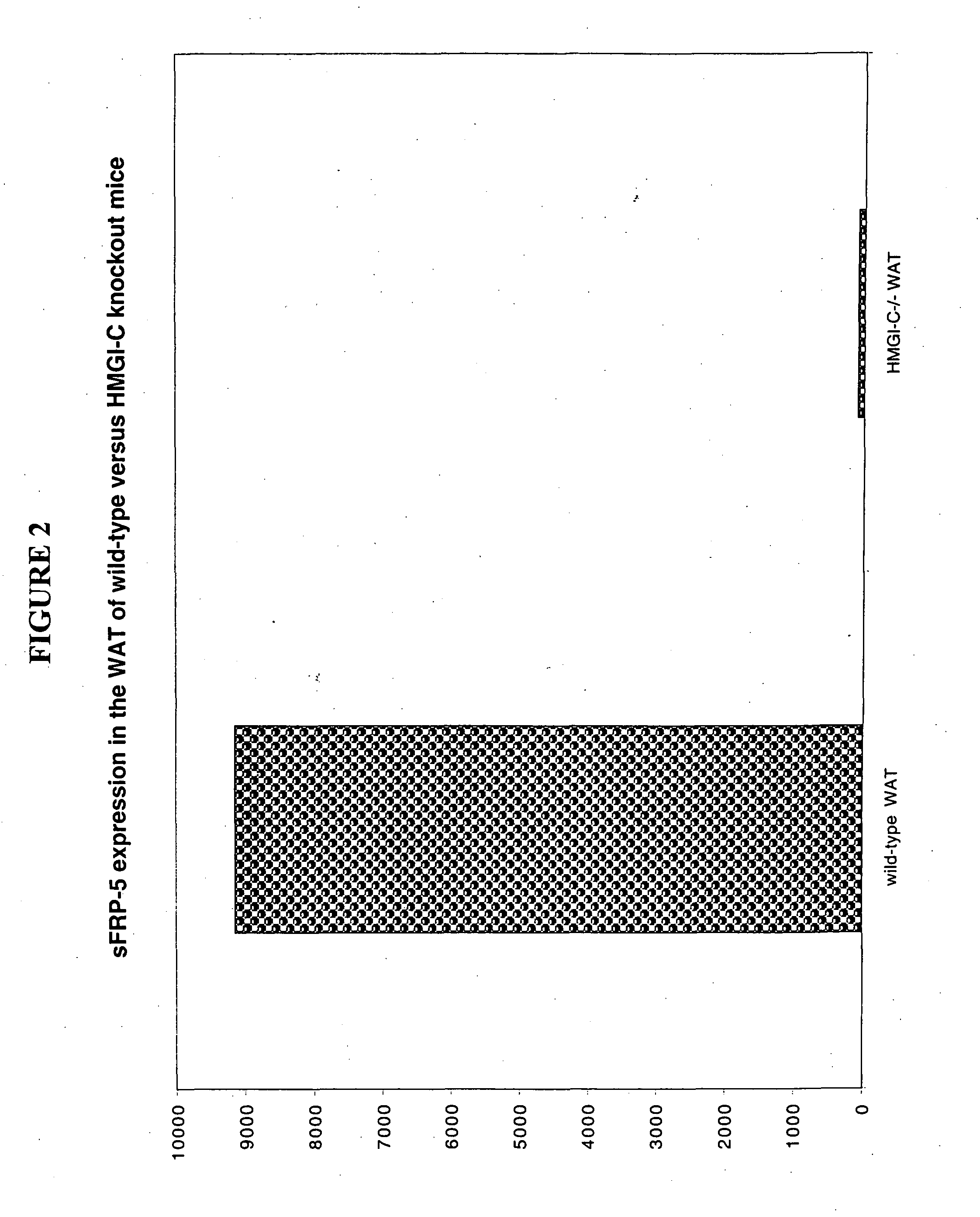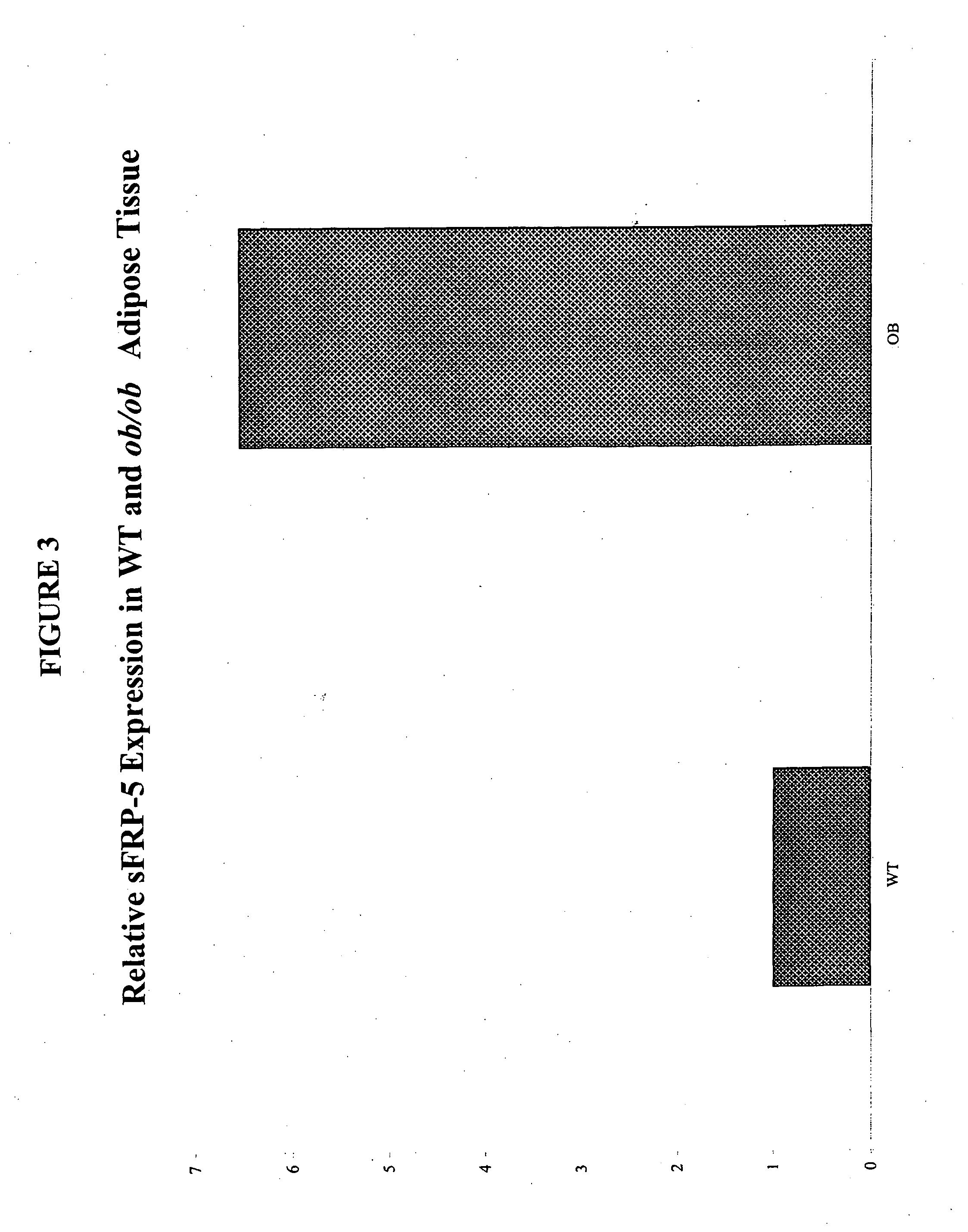Methods of identifying adipocyte specific genes, the genes identified, and their uses
a technology of adipocytes and specific genes, applied in the field of molecular biology, human metabolism and physiology, can solve the problems of obesity, or an excess of body fat relative to lean body mass, poor self-image, poor body-image,
- Summary
- Abstract
- Description
- Claims
- Application Information
AI Technical Summary
Benefits of technology
Problems solved by technology
Method used
Image
Examples
Embodiment Construction
[0027] This invention provides a method of identifying adipocyte specific genes and proteins encoded thereby. “Adipocyte specific” refers to genes that are preferentially expressed at a higher level in adipocytes when compared to their expression, if any, in other tissue. An aspect of the invention relates to methods for using adipocyte specific polypeptides and polynucleotides, including the treatment of obesity, hypertension, cardiovascular disease and diabetes. The present invention is also implicated in diseases and conditions such as obesity, hypertension, cardiovascular disease and diabetes, among others. In still another aspect, the invention relates to methods to identify agonists and antagonists using the materials provided by the invention, and treating diseases or conditions associated with obesity, hypertension, cardiovascular disease and diabetes with the identified compounds. Methods of using the inventive polynucleotides and polypeptides as pharmaceutical formulations...
PUM
| Property | Measurement | Unit |
|---|---|---|
| Fraction | aaaaa | aaaaa |
| Fraction | aaaaa | aaaaa |
| Fraction | aaaaa | aaaaa |
Abstract
Description
Claims
Application Information
 Login to View More
Login to View More - R&D
- Intellectual Property
- Life Sciences
- Materials
- Tech Scout
- Unparalleled Data Quality
- Higher Quality Content
- 60% Fewer Hallucinations
Browse by: Latest US Patents, China's latest patents, Technical Efficacy Thesaurus, Application Domain, Technology Topic, Popular Technical Reports.
© 2025 PatSnap. All rights reserved.Legal|Privacy policy|Modern Slavery Act Transparency Statement|Sitemap|About US| Contact US: help@patsnap.com



